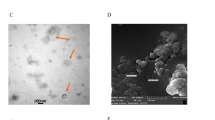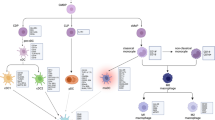Abstract
Statement of the Problem: The sheep erythrocyte membrane glycoprotein T11TS/SLFA-3 can form a ligand-receptor complex with CD2 present on immunocyte and exert stimuli for activation and proliferation. Regression of brain tumor with the application of T11TS indicates the probable role of microglia, the chief immunomodulatory cell within the brain compartment. In the present study microglial activation and immunophenotypic modulation were assessed in T11TS treated brain tumor-bearing animal models. Rat glioma models induced by chemical carcinogen ENU were treated with three consecutive doses of T11TS. Microglial cells from brain were isolated and assessed through E-rosette formation, SEM and FACS for CD2, MHC class II, CD25, and CD4. The preliminary indication of presence of CD2 on microglia through E-rosette formation was confirmed by SEM and FACS. MHC class II and CD2 single and double positive subpopulations exist, and their expression is also modulated in different doses of T11TS. A general trend of highest receptor saturation and microglial activation, measured through the activation marker CD25 and CD4 expression, was observed in 2nd dose of T11TS administration, which was then dampened via a complex immune feedback mechanism in the 3rd dose. Published in 2004.
Similar content being viewed by others
References
Howard FD, Ledfetter JA, Wong J, Bieber CP, Stinson EB, Herzenberg A, A human T lymphocyte differentiation marker de-fined by monoclonal antibodies that block E-rosette formation, J Immunol 126, 2117–22 (1981).
Moingeon P, Chang HC, Wallner BP, Stebbins C, Frey AZ, Reinherz EL, CD2 mediated adhesion facilitates T lymphocyte antigen recognition function, Nature 339, 312–4 (1989).
Kitao T, Takeshita M, Hattori K, Studies on glycopeptide released by trypsin from sheep erythrocytes, J Immunol 117, 310–2 (1976).
Sun ZJ, Dotsch V, Kim M, Li J, Reinherz EL, Wagner G, Functional glycan-free adhesion domain of human cell surface receptor CD58: design, production and NMR studies, EMBOJ 18, 2941–9 (1999).
Siliciano RF, Pratt JC, Schmidt RE, Ritz J, Reinherz EL, Activation of cytolytic T lymphocyte and natural killer cell function through the T11 sheep erythrocyte binding protein, Nature 317, 428–30 (1985).
Le GS, Le DE, Labarriere N, Fonteneau JF, Viret C, Diez E, Jotereau F, LFA-3 costimulates cytokine secretion by cytotoxic T lymphocytes by providing a TCR-independent activation signal, Eur J Immunol 24(4), 1322–31 (1998).
Sarkar S, Begum Z, Dutta SK, Chaudhuri S, Chaudhuri S, Sheep form of leucocyte function antigen-3 (T11TS) exerts immunostimulatory and anti-tumor activity against experimental brain tumor: A new approach to biological response modifier therapy, J Exp Clin Cancer Res 21(1), 95–106 (2002).
Sedgwick JD, Ford AL, Foulcher E, Airriess R, Central nervous system microglial cell activation and proliferation follows direct interaction with tissue infiltrating T cell blasts, J Immunol 160, 5320–30 (1998).
Aloisi F, Immune function of microglia, Glia 36, 165–79 (2001).
Roggendorf W, Stupp S, Paulus W, Distribution and characterization of microglia/ macrophages in human brain tumors, Acta Neuropathol 92, 288–93 (1996).
Streit WJ, Walter SA, Pennell NA, Reactive microgliosis, Prog Neurobiol 57, 563–81 (1999).
Aloisi F, Serafini B, Adorini L, Glia-T cell dialogue, J Neuroimmunol 107, 111–7 (2000).
Lantos PL, Chemical induction of tumors in nervous system. In NeuroOncology, edited by ThomasGT(Curchill Livingstone, New York, London, 1993), pp. 85–107.
Fischer HG, Reichmann G, Brain dendritic cells and macrophage/ microglia in central nervous system inflammation, J Immunol 166, 2717–26 (2001).
Bell GM, Bolen JB, Imboden JB, Association of Src-like protein tyrosine kinases with the CD2 cell surface molecule in rat lymphocytes and natural killer cell, Mol Cell Biol 12, 5548–54 (1992).
Begum Z, Sarkar S, Mukherjee J, Ghosh A, Chaudhuri S, Chaudhuri S, Evaluation of anti-tumor property of specific and non-specific BRMs in experimental glioma by assessing the microglial cell function and phenotypic modulations, Cancer Biol Therapy 2, 356–63 (2003).
Morantz RA, Wood GW, Foster M, Clark M, Gollahon K, Macrophages in experimental and human brain tumors. Part 1: Studies of the macrophage content of experimental rat brain tumors of varying immunogenicity, J Neurosurg 50, 298–304 (1979).
Taniguchi T, Minami Y, The IL-2/IL-2 receptor system: A current overview, Cell 75, 5–8 (1993).
Schluesener HJ, Seid K, Kretzschmar J, Meyermann R, Leucocyte chemotactic factor, a natural ligand to CD4, is expressed by lymphocytes and microglial cells of the MS plaque, J Neuroscience Res 4(6), 606–11 (1996).
Ogasawara H, Kusuy K, Takasaki S, Role of terminal galactose residues in N-linked sugar chains of sheep erythrocyte membrane glycoproteins in rosette formation with T-lymphocytes, Immunol Lett 48, 35–8 (1995).
Mukherjee J, Sarkar S, Ghosh A, Duttagupta AK, Chaudhuri S, Chaudhuri Swapna, Immunotherapeutic effects of T11TS/SLFA-3 against nitroso compound mediated neural genotoxicity, Tox Lett 150, 239–57 (2004).
Fox DA, Hussey RE, Fitzgerald KA, Bensussan D, Daley JF, Schlossman SF, Reinherz EL, Activation of human thymocytes via the 50 Kd T11 sheep erythrocytes binding protein induces the expression of interleukin 2 receptors on both T3+ and T3- populations, J Immunol 134, 330–5 (1985).
Springer TA, Dustin ML, Kishimoto TK, Marlin SD, The lymphocyte function associated LFA-1, CD2 and LFA-3 molecules: Cell adhesion receptors of the immune system, Annu Rev Immunol 5, 223–52 (1987).
Mukherjee J, Dutta S, Sarkar S, Begum Z, Ghosh A, Chaudhuri S, Chaudhuri S, Preclinical changes in immunoreactivity and cellular architecture during the progressive development of intracranial neoplasms and an immunotherapeutic schedule with a novel biological response modifier, the T11TS/ SLFA-3, Asian Pacific J Cancer Prev 3, 325–37 (2002).
Ling EA, Wong WC, The origin and nature of ramified and amoeboid microglia-A historical review and current concepts, Glia 7, 9–18 (1993).
Rights and permissions
About this article
Cite this article
Begum, Z., Ghosh, A., Sarkar, S. et al. Documentation of immune profile of microglia through cell surface marker study in glioma model primed by a novel cell surface glycopeptide T11TS/SLFA-3. Glycoconj J 20, 515–523 (2003). https://doi.org/10.1023/B:GLYC.0000043287.98081.15
Issue Date:
DOI: https://doi.org/10.1023/B:GLYC.0000043287.98081.15




